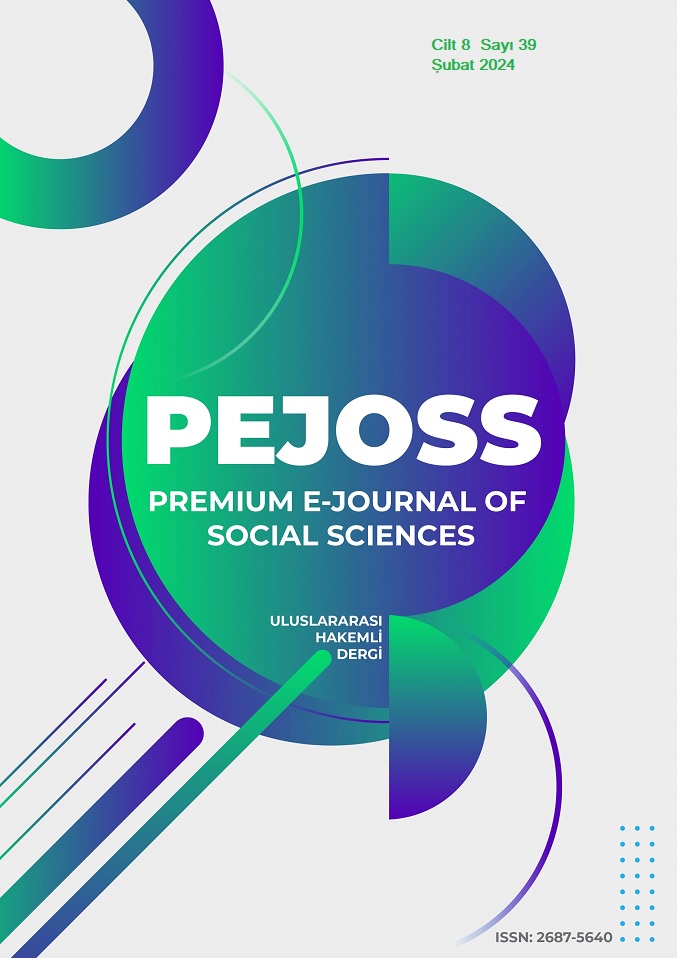The Place and Importance of Water and Life in Religion and Civilizations
DOI:
https://doi.org/10.5281/zenodo.10760581Keywords:
Water, Life, Religion, CivilizationAbstract
Since its existence, humanity has attributed various meanings to many elements of nature and has sanctified some of them. Trees, mountains, celestial bodies and water are a few of them. Water has a much more special meaning for them, too. People have seen water as a means of cleansing, purification, getting rid of sins, healing, fertility, rebirth and a source of life. In addition, they also believed in the punishment and destruction aspect of water. People took particular care to locate the civilizations they would establish in environments where there was water. Water-related rituals and ceremonies have been developed in many religions and beliefs. Baptism, bathing in rivers, washing hands before meals, scattering the ashes of dead people into water, and touching water before worship are some of these. In some civilizations, water has often been deified and worshiped as a symbol. Although water is not deified in Turkish civilizations, it is considered sacred and given great importance. Water and life have taken their place in people's lives as two concepts that complement each other. In this study, the place of water and life in human life in sacred religions and other belief systems, the establishment of civilizations and the importance of water and life in the continuation of civilizations have been researched, and it is aimed to explain to the readers by examining the view of water and life of civilizations and religious beliefs from past to present.
Downloads
References
Bilgiç, D. E. & Hosny E. A. (2019). Din ve İnançlarda Suyun Önemi ve Mimariye Yansıması Elhamra Sarayı Örneği. TİDSAD Türk İslam Dünyası Sosyal Araştırmalar Dergisi, 1, 59-76, 2019
Corbin, J. & Strauss, A. (2008). Basics of Qualitative Research: Techniques and Procedures for Developing Grounded Theory (3rd ed.). Thousand Oaks, CA: Sage. Organizational Research Methods, 12(3), 614-617.
Çaycı, A. & Akgül, M. (2012). Mitoloji ve Din. Ed. Remzi Duran, Anadolu Üniversitesi Yayınları, 1. Basım,.
Demirci, K. (1998). Hristiyanlık. DİA, TDV. Yayınları.
Erdem, M. (1993). Hıristiyanlıktaki Vaftiz Anlayışı Üzerine Bir Araştırma. Ankara Üniversitesi İlahiyat Fakültesi Dergisi 34, sy. 1-4 (Haziran 1993): 133-54.
Esin, O. (2018). İnanç Temelinde Suyun Yaradılış Düşüncesi Ve Geleneksel Yapı Üzerindeki Etkisi. Uluslararası Sosyal Araştırmalar Dergisi, XI (58), 61-69.
Heidel, A. (2000). Enuma Eliş Babil Yaratılış Destanı (çev. İsmet Birkan). Ayraç Yayınları.
Kitabı Mukaddes Şirketi (2001) Eski Ahit.
Kurt Fidan, M. (2001). Kutsal Suyun İzinde: Suya Yüklenen Dini ve Sembolik Anlamlar. İlsam Akademi Hakemli Dergisi, 1(1), 1-27.
Sezal, Z. (2007). Su Simgeciliği ve İlahi Dinlerde Arınma. [Yüksek Lisans Tezi], KSU Sosyal Bilimler Enstitüsü.
Türkyılmaz, A. (2013). İslamiyet Öncesi Türklerde Su Kültü ve Günümüze Yansımaları. Bilim ve Kültür Uluslararası Kültür Araştırmaları Dergisi, 4, 83-100.
Yıldırım, A.& Şimşek, H. (2011). Sosyal Bilimlerde Nitel Araştırma Yöntemleri. Seçkin Yayıncılık.
Yitik, A.İ. (2007). Hinduizm, Yaşayan Dünya Dinleri. DİB. Yayınları.
Downloads
Published
How to Cite
Issue
Section
License
Copyright (c) 2024 Premium e-Journal of Social Science (PEJOSS)

This work is licensed under a Creative Commons Attribution 4.0 International License.


